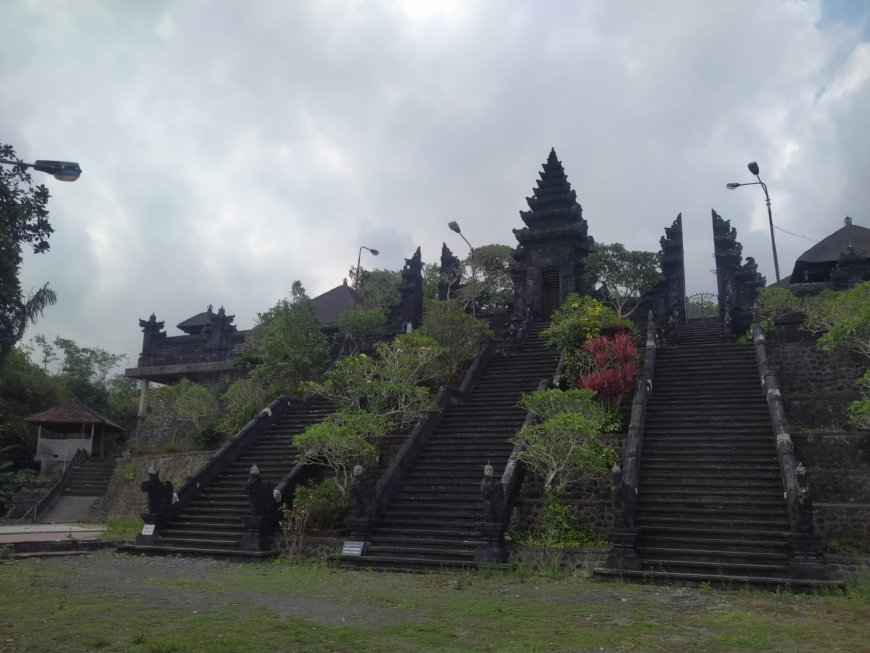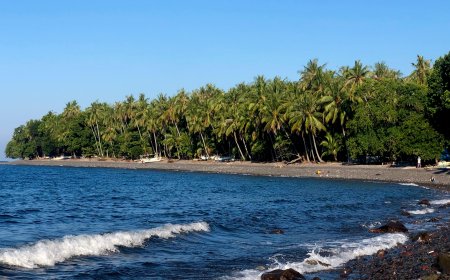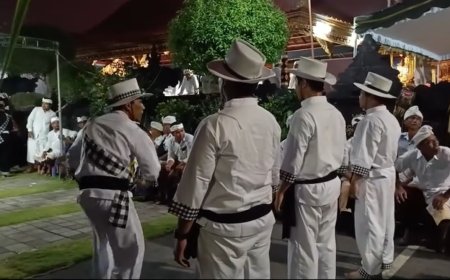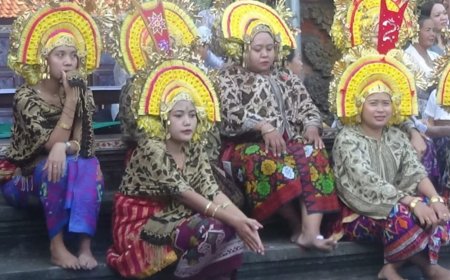The Sacred Tradition of Tapakan and Pasupati at Luhur Pucak Padang Dawa Temple: Bali's Spiritual Legacy
Bali is widely recognized for its rich cultural heritage and unique traditions. One such remarkable tradition takes place at Luhur Pucak Padang Dawa Temple, located in Bangli Village, Baturiti district, Tabanan Regency. Every Wednesday Kliwon Wuku Pahang, better known as Buda Kliwon Pegat Uwakan, the temple becomes the center of attention as the sacred piodalan nadi is celebrated.

Luhur Pucak Padang Dawa Temple, a kahyangan jagat temple, holds a significant place in the spiritual lives of the Balinese Hindu community. The temple is regarded as a sacred site for nunas pasupati, where devotees seek divine blessings to sanctify sacred objects. The temple is home to the manifestations of Ida Bhatara, represented through sacred wayang figures such as Hanoman, Rahwana, Sugriwa, Singanana, Sempati, Anila, Angada, Sangut, and Delem. These nine figures, known collectively as Ida Bhatara Dewata Nawa Sanga, lend a distinct spiritual character to every ceremony held here.
Ida Bhatara Dewata Nawa Sanga (Source: Personal Collection)
One of the temple’s most unique traditions is the annual gathering of Tapakan from various regencies across Bali, including Gianyar, Jembrana, Badung, and Bangli. These Tapakan, spiritual intermediaries who convey divine messages, come together during the piodalan nadi, the temple's anniversary celebration. Held annually on Buda Kliwon Pahang, 34 days after Galungan, this three-day ceremony serves as an occasion for the Tapakan to seek pasupati, or spiritual empowerment, from Ida Bhatara to re-energize sacred objects like the pratima.
In the weeks leading up to the piodalan, a ritual known as mejaba kuta (a spiritual journey through villages) is performed by Ida Bhatara Dewata Nawa Sanga, the presiding deities of the temple. For 42 days, Ida Bhatara travels through predetermined villages, making stops along the way, before reaching Batu Bolong Beach for the Melasti purification ceremony. At each village, Ida Bhatara stays overnight, and the local communities ensure their Tapakan Barong will be present at the main piodalan event at Luhur Pucak Padang Dawa Temple.
Luhur Pucak Padang Dawa Temple is not only a spiritual center for Balinese Hindus but also a vital site for preserving traditional Balinese puppet theater, or wayang. The presence of Ida Bhatara’s manifestations in the form of wayang characters adds a unique cultural dimension to the rituals performed here. This fusion of religion, art, and tradition enriches Bali’s cultural landscape. Priests at the temple frequently hold wayang kulit performances as part of the ceremonies, with the purpose of invoking blessings and protection from the divine figures who reside in the temple.
Piodalan Nadi (Source: Personal Collection)
The highlight of the piodalan is the purification ceremony held at Beji Pucak Padang Dawa, symbolizing the spiritual and cultural richness of Bali. This annual tradition not only reflects the deep sense of community and diversity in the practice of Hindu rituals in Bali but also preserves the sanctity and continuity of the island’s ancestral beliefs at this revered temple.
Additionally, the temple plays a strategic role in maintaining the balance between the natural world and human activities in Bali. Rituals such as the Melasti purification during the piodalan nadi are not only spiritually significant but also symbolic of cleansing both individuals and the natural environment. This ceremony unites the community in a collective effort to purify the world from negative influences and seek blessings from nature. Through these practices, Luhur Pucak Padang Dawa Temple upholds its essential role in fostering harmony between humanity, nature, and the divine, reflecting the Balinese philosophy of Tri Hita Karana.






























































